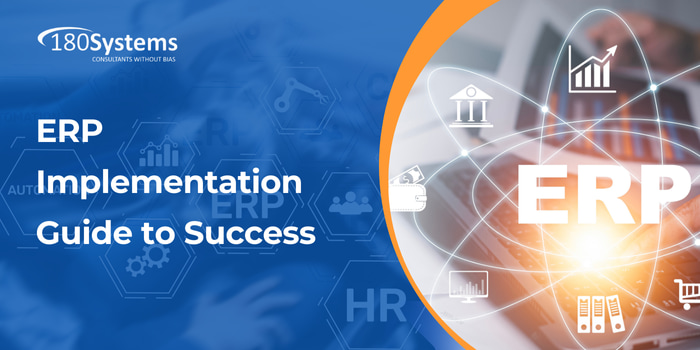You have probably heard horror stories about system implementation, especially related to ERP implementation (Enterprise Resource Planning). Selecting the right system is no guarantee of a successful implementation. Consider doing the following:
Business Case Foundation
Don’t forget what you should have known during the selection process. You should have already understood Critical Success Factors (CSFs). CSFs are defined as those things that you must do well in order to be successful. As well, you should have defined measurements of success. Before starting any project, you should know how to measure success. Measurements of success act as a motivator for staff during the implementation, and help keep the project on track and focused on CSF’s. Even if you have not done it for system selection, it’s not too late.
Business Process Improvement
Don’t assume that your existing business process is the best way to get the job done. Even worse, don’t insist on modifying the new system to do exactly what was done before. First, ensure there is an understanding of existing business process. Roll up your sleeves and talk to the people who do the work. Ask them to tell you how much time is spent on activities. It may not seem serious if 1 person wastes 15 minutes per day – but what does it cost if there are 10 people doing the same thing throughout the year? Assuming a rate of $25/hour and 1,800 hours or work per year, that little problem has cost the company $112,500 for the year. See our Business Process Review service here.
Project Management
Project management (PM) is a key factor in predicting success of any project. Project management includes management of scope, budget and timing. Rather than using the school of hard knocks, you should consider working with a structured methodology such as published by the PMI (Project Management Institute). A good project manager has support of upper management, and can be tough. If the project manager wants to please everyone, he/she is not the right person.
Change Management
You would think that everyone will be onside. Employees learn new skills and they become more marketable and valuable. They will be able to do less clerical work in their day-to-day jobs and will be able to make a contribution to the success of their employer.
But beware. Your employees may be threatened if they think their jobs are at stake or they will lose power as a result of a new system. They may also be concerned about the time it will take to implement the system. In addition, large organizations often have multiple profit or cost centres that need to adapt to standardization but are not ready to make these changes as they are viewed detrimental to their profit or cost centre. Sometimes implementations are based on adapting so called “best practice.” Best practice could lead to huge changes that are not understood or expected throughout the organization. So it’s not enough to have great software or a great implementation partner. You also need your own internal people ready for change.
Internal Champion in System Implementation
An internal champion must be allocated to the project. Even the most difficult projects can become successful when you have an internal champion who is ready to do whatever it takes to get the job done. It is best to assign the internal champion at the beginning of the system selection project to ensure their commitment and agreement with the system selected.
Employee Involvement
You need their involvement for many reasons. Without it, you could risk missing critical business process that only they know about. And just as important is the psychological component. People are often threatened by change. By getting them involved, they are more likely to be supportive.
Best People
You want your best people involved in the implementation. They have the confidence of their colleagues, know the business well, and usually have the right attitude. The implementation is going to take time. You must reduce their normal workload.
Risk Management
Seek out potential risks, their impact, and their likelihood of occurring. Encourage all interested parties to develop strategies to mitigate the risks. Every organization has at least 1 naysayer, who can cause a lot of problems, but who is also very knowledgeable. The naysayers must be included in the risk management process. By getting their input early, you can avoid problems and you effectively limit their negativity.
Communicate
Don’t keep people in the dark. Communicate formally, informally and frequently.
Train the Trainer
This is a good way to cut training costs, and force employees to know the system. The best way to learn a subject is to teach it.
Extensive Prototyping
There are many options in the setup of a new system including setup options, conversion, integration, and customization. An iterative process is required until the prototype is completed. It may take a few times before you get it right. Take a small, representative sample of transactions through the system including reports and controls. Don’t go live before everyone is ready.
Beware of Customizations
Customizations can bite. The first bite is that it slows down the system implementation and the costs soar. The second bite occurs when you want to upgrade to the newest release. This is not to say that some customizations are warranted and have a compelling business case.
Phased in Approach
There is also what is called the big bang theory, when you do it all at once. I think it got its name because everyone shot each other. Small and mid sized businesses especially don’t have the manpower to do it all at once.
Post System Implementation Review
Learn from your mistakes and there’s always room for improvement.
